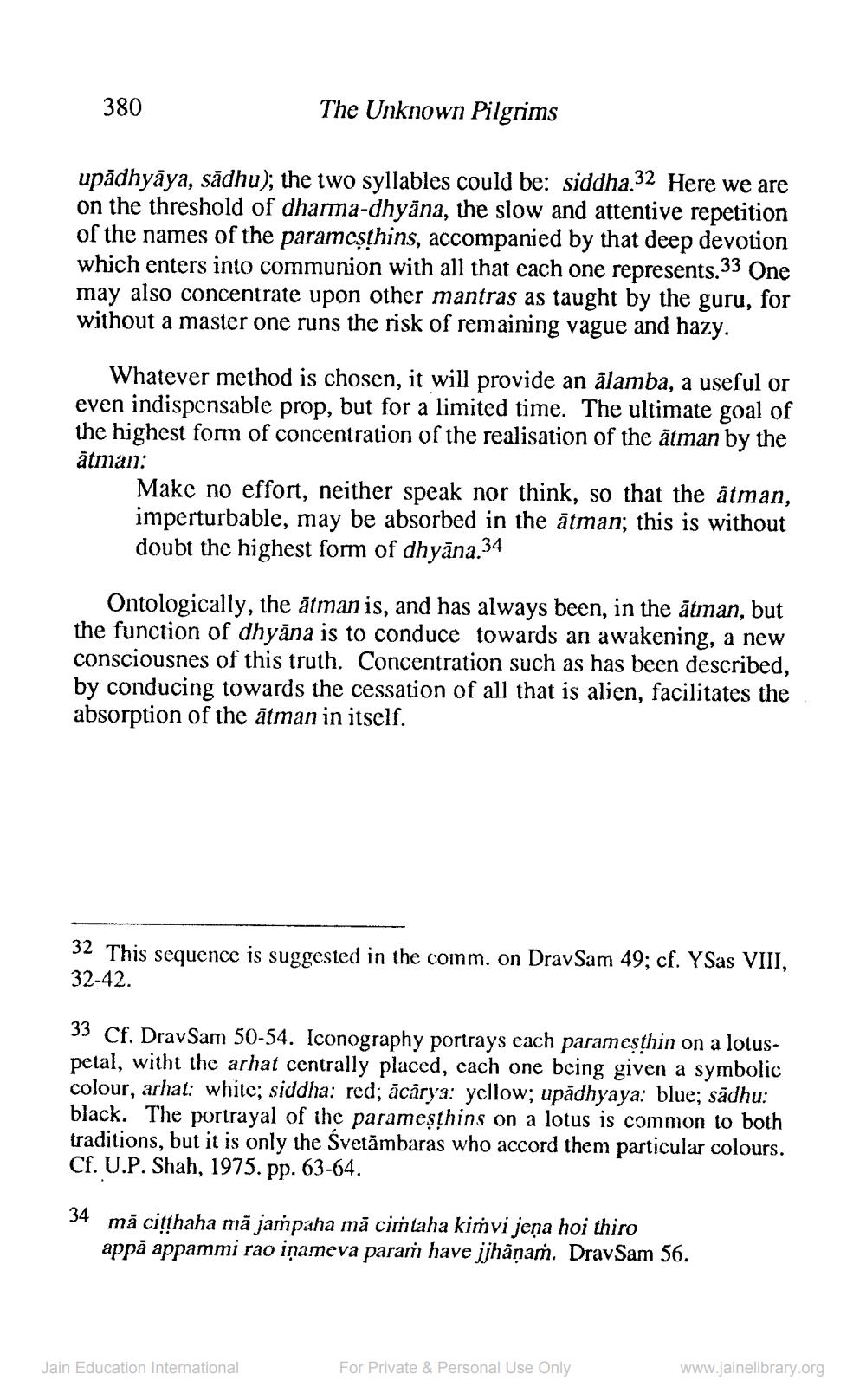________________
380
The Unknown Pilgrims
upādhyāya, sādhu); the two syllables could be: siddha.32 Here we are on the threshold of dharma-dhyāna, the slow and attentive repetition of the names of the parameşthins, accompanied by that deep devotion which enters into communion with all that each one represents.33 One may also concentrate upon other mantras as taught by the guru, for without a master one runs the risk of remaining vague and hazy.
Whatever method is chosen, it will provide an alamba, a useful or even indispensable prop, but for a limited time. The ultimate goal of the highest form of concentration of the realisation of the ātman by the ätman:
Make no effort, neither speak nor think, so that the atman, imperturbable, may be absorbed in the atman; this is without doubt the highest form of dhyāna.34
Ontologically, the ātman is, and has always been in the ātman, but the function of dhyāna is to conduce towards an awakening, a new consciousnes of this truth. Concentration such as has been described, by conducing towards the cessation of all that is alien, facilitates the absorption of the ātman in itself.
32 This sequence is suggested in the comm. on DravSam 49; cf. YSas VIII, 32-42.
33 Cf. DravSam 50-54. Iconography portrays each paramesthin on a lotuspetal, witht the arhat centrally placed, each one being given a symbolic colour, arhat: white; siddha: red; ācārya: yellow; upādhyaya: blue; sādhu: black. The portrayal of the parameșthins on a lotus is common to both traditions, but it is only the Svetāmbaras who accord them particular colours. Cf. U.P. Shah, 1975. pp. 63-64.
34 mā cithaha mā jampaha mā cimtaha kimvi jeņa hoi thiro
appă appammi rao iņameva paraṁ have jjhāņań. DravSam 56.
Jain Education International
For Private & Personal Use Only
www.jainelibrary.org




